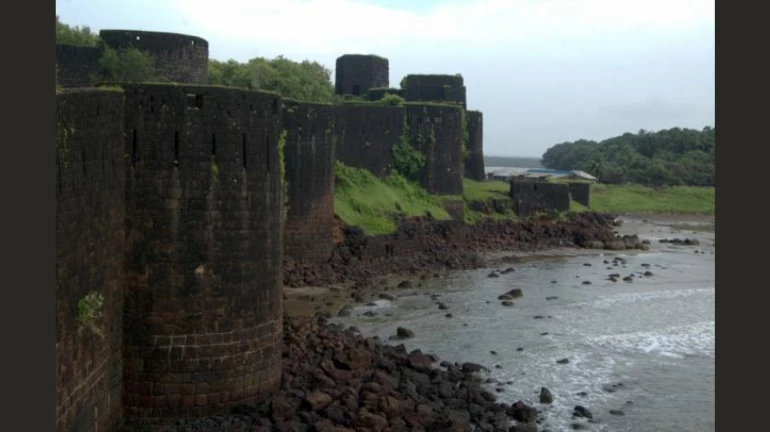
As the farmers from Maharashtra have been worst hit by the recent floods and extreme weather events, the latest study highlights how such climate change impacts might get worse from here on.
Of the 36 districts in Maharashtra, 11 districts were found highly vulnerable to extreme weather events, droughts and dwindling water security and account for almost 40% of the cropped area across Central Maharashtra. In the same way, 37% of the state’s agricultural area spread over 14 districts were moderately vulnerable, which takes the tally to three-fourths of Maharashtra’s cropped regions as high to moderate vulnerable to the prevailing climate crisis.
A research study - ‘Socio-economic vulnerability to climate change – Index development and mapping for districts in Maharashtra’, revealed that extreme climate conditions highly affects the livelihoods and agrarian economy of Maharashtra.
The study conducted by Chaitanya Adhav at Indian Council of Agricultural Research (ICAR)-National Dairy Research Institute (NDRI), Karnal, Haryana, under the guidance of Dr R Sendhil from ICAR-Indian Institute of Wheat and Barley Research, revealed that Nandurbar was the most vulnerable district to cyclones, floods, droughts, changing rainfall patterns and extreme temperatures affecting its crop production. Other highly vulnerable 10 districts include Buldhana, Beed, Jalna, Aurangabad, Hingoli, Parbhani, Nanded, Akola, Amravati, Washim,” said Chaitanya Adhav.
The study also lists down 14 districts as moderately vulnerable, which includes Dhule, Jalgaon, Ratnagiri, Sindhudurg, Sangli, Solapur, Osmanabad, Latur, Yavatmal, Wardha, Chandrapur, Bhandara, Gondia and Gadchiroli.
The dominant crops from these districts that will bear the brunt of the climate suggest that farming of jowar, rice, wheat, sugarcane, cotton, ragi, cashew nut, barley, millets could get adversely affected more in future.
Explaining it further Adhav said their findings showed that most of the highly vulnerable districts fell under the Central Maharashtra Plateau Zone, which makes up to 22.22 per cent share of the total cropped area in Maharashtra. The Central Vidarbha Zone has an additional share of 6.78 per cent area as highly vulnerable.
The authors explained that to quantify the climate change-induced risk, the socio-economic vulnerability index (SEVI) was calculated using the Intergovernmental Panel on Climate Change (IPCC) approach considering key climatic parameters such as exposure, sensitivity and adaptive capacity of districts to climate vulnerability.
The data was collected on 44 indicators related with climatic as well as socio-economic variables which were identified based on experts’ opinion. The author mentioned that the study did not include Mumbai City and Suburban districts from the analysis. According to the India’s Livelihoods Report 2019, farming is the prime livelihood source for 51 percent of Maharashtra’s population.
“Mapping of districts shows that there is an instant need for focused policy efforts to address the socio-economic vulnerability in Central Maharashtra Plateau Zone, Scarcity Zone (Dhule, Part of Nandurbar and Aurangabad), and Eastern Vidarbha Zone,” Adhav said.
As per the study, field demonstration to farmers, information dissemination through early warning systems was a must- as a strategy to address these climate impacts that needs to be initiated at the village level.
“Additionally, the policy-making process should include inputs from as many stakeholders as possible before implementation. Ultimately, the outcome of micro-level adaptation strategies should get reflected at the state level,” the authors said.
Nine districts including Palghar, Thane, Raigad, Nashik, Satara, Kolhapur, Ahmednagar, Nagpur and Pune were found to be least vulnerable to climate agricultural distress.
Meanwhile, climate experts said that as states like Maharashtra develop their climate action plans to tackle the climate crisis and reduce emissions, this study is indicative of the dire consequences of not acting on climate with urgency.
Akshay Deoras, an Independent meteorologist and PhD student at the University of Reading in England said, “Farmers in Maharashtra are extremely vulnerable to high-impact weather events. The last decade alone has shown us severe droughts in 2014, 2015 and 2018, massive hail storms in 2014 and 2015, and excess rainfall in 2016, 2019 and 2021 that led to significant flooding in western parts of the state. The situation has recently aggravated a lot for the Konkan coast with impacts due to tropical cyclones Nisarga and Tauktae in 2020 and 2021, respectively, and significant floods this year. In the absence of proper irrigation in most of the state, which mainly includes Marathwada and Vidarbha, fluctuations in the monsoon rainfall affect sowing and crop growth, resulting in high vulnerability to the crop yield. The lack of a robust weather-forecast dissemination system adds to the vulnerability.
Vijay Anna Borade, Agriculture Expert & Trustee of the Marathwada Sheti Sahayak Mandal (MSSM), said, “While there is a lot of discussion about impacts of climate change on agriculture, there is very little on-ground action that has been taken. What we are witnessing now is concerning because on one hand, the number of rainy days in a year have reduced drastically while on other hand areas in Marathwada, which usually receive very little rainfall, are now being flooded. Keeping in mind the vulnerability of districts, changing crop patterns is a solution but it's not going to be such an easy task. We need to create parallel programs (adequate drainage, drip irrigation, crop rotation etc.) to get stability in crop productivity and stable income of farmers. Only then can we divert farmers to change their crop patterns. Another option is controlled farming which also has financial limitations. Thus, we need a viable and sustainable plan to enable Maharashtra to tackle the impacts of climate change on farming.”





